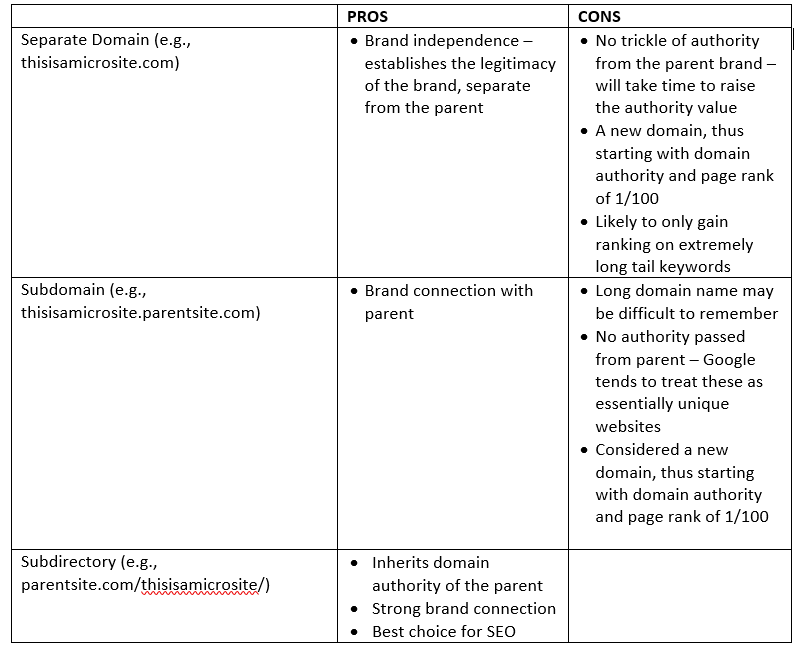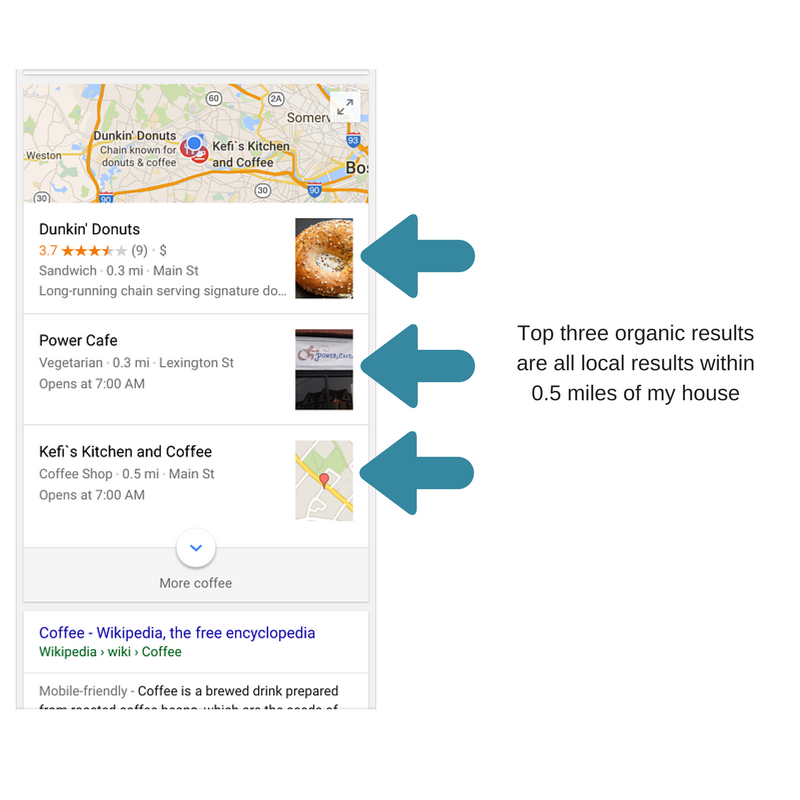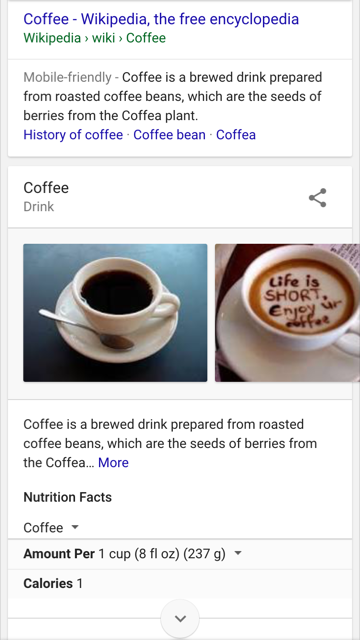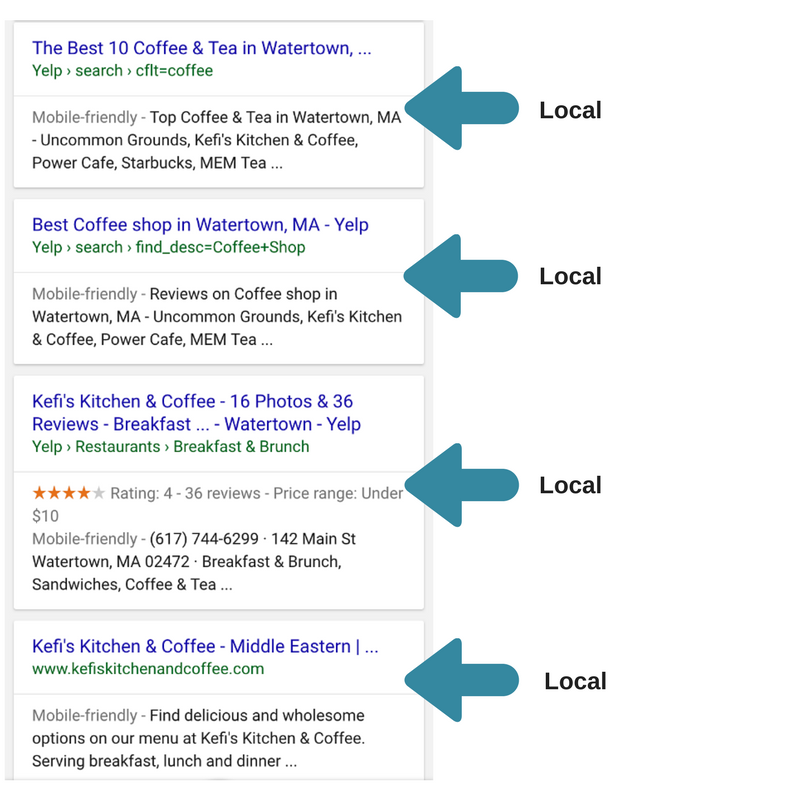by Charles River Interactive | September 13, 2016 | Organic Search, Uncategorized
Implementation is one of the toughest challenges any SEO consultant faces. That’s because making many of the key changes we recommend takes an investment of time, resources and planning from the client.
The most successful client engagements develop from a true partnership among teams, including the SEO consultants and account managers working closely with client-side project managers, developers and key stakeholders.
We make customized recommendations based on your product, target audience and marketing goals, and then continue to support you throughout implementation as needed. In some cases, the CRI team can even implement the recommendations for you.
Roadblocks to SEO Implementation
However, as client managers, it’s important for us to understand that it’s not always an easy process.
There are a number of reasons that could prevent clients from implementing SEO recommendations:
- The CMS may not be as easily customizable as the client team initially believed.
- There may be a lengthy approval process that recommendations need to go through first.
- The website may be in line for a redesign and the webmaster is pushing back with making any updates before the refresh launches.
Often, it’s simply a resource issue that puts SEO recommendations on the back-burner.
The Importance of Prioritizing SEO Implementation
While all of these are valid, keep in mind the following:
- Without making any major updates to the site, you can’t expect the results that you’re trying to accomplish. It’s very important to understand that implementing recommendations is crucial to any SEO program success.
- It does take time with search engines to register your site’s updates. So, the sooner you implement the SEO recommendations, the sooner you will see a boost in performance.
- Testing things out can lead to more effective strategy and tactics. What makes paid search so flexible and powerful is the ability to constantly test the ad copy to determine what brings the highest click-through rate at the lowest cost. Of course, organic optimization is completely different and you won’t be able to see the same results in the same timeframe as with a PPC campaign. However, implementing SEO recommendations quickly, monitoring performance and adjusting tactics as needed can significantly boost organic results.
Troubleshooting SEO Challenges
Here at CRI, we perform implementations for a number of clients and have seen great success.
When this method is not possible, educating clients on the importance of SEO implementation, explaining potential results and providing competitive examples help the most.
What helps you to make sure the SEO recommendations get implemented? How do you overcome obstacles on this front if there are limitations as to what can be done?
Interested in learning more about trends and developments with Google? Read more from our blog, View from the Charles:
What You Need to Know about Google Symptom Search
Make Google Alerts Work for You
by Charles River Interactive | August 23, 2016 | Organic Search
We have all seen them – a site that is part of a larger brand, yet looks different and acts as its own entity. This is referred to as a microsite, used by organizations to present information that is separate from the main website and perhaps present a different or co-branded concept. The most common uses of a microsite include:
• Raising brand awareness
• Promoting offshoot brands
• Raising awareness for an event or promotion
• Launching a new product or service
• Building a subscriber list
Options for Microsite Creation
Common thinking is that a microsite needs to be its own domain, however other options for a microsite include use of a subdomain or a subdirectory of the main site. Depending upon the goals for the microsite, there are pros and cons associated with each of these methods.
Separate Domain
Creation of a separate domain such as thisisamicrosite.com would provide brand independence and establish the legitimacy of the brand, separate from that of the parent. As a new domain, the site will not gain any authority value from the parent, and beginning with domain authority and page rank of 1/100 will require time for search engines to connect the relevance of the content with search queries. If, and only if, there is sufficient unique content and time for the site to gain value with the search engines should this method be used. In other words, if launching a limited three-month campaign, this is not the ideal method.
Subdomain
Use of a subdomain such as thisisamicrosite.parentsite.com will provide the connection for users between the new brand and the parent. While Google has made improvements in discerning the connection between the sites, the subdomain is still considered a new domain and will not inherit any of the parent’s authority. The potentially lengthened domain name can also be cumbersome and difficult for users to remember.
Subdirectory
Creating the microsite as a subdirectory of the parent site, e.g., parentsite.com/thisisamicrosite/ is the ideal option for SEO value. This provides a strong brand connection and inheritance of the parent site domain authority.
The bottom line
Creating a microsite can be a valuable move for an organization. In doing so, attention needs to be paid to the goals for the site and method utilized to create the microsite, especially when it comes to SEO.

Interested in learning more about microsites and SEO? Read more from our blog, View from the Charles:
Location does matter – when it comes to organic search results
What You Need to Know About Google Symptom Search
by Charles River Interactive | August 16, 2016 | Organic Search
The well-written meta description: It’s one of those oft-forgotten but incredibly important digital writing and SEO tools that can make your brand’s content look polished, professional and complete. How can a single sentence hold so much power? Let’s discuss the meta description and how it can help you attract user click-throughs to your page.
What is a Meta Description?
A meta description is a sentence – no longer than 155 characters – that appears in search engine result pages (SERPs) under the title and URL of your web content. Take a look at how it appears in Google when you search for “Charles River Interactive”:

Why are Meta Descriptions Important?
It’s an over-used cliché to describe websites as the virtual front door to your company or organization. But if we piggyback on this metaphor, a well-written meta description is part of the on-page optimization package that forms your attractive façade or catchy signage.
Key points to keep in mind:
Meta descriptions improve site visits
The meta description tells users what content they will find on your page, and whether it is worth their time to click. Most importantly, they persuade users to choose your page over your SERP competitors.
Because many sites still neglect to write meta descriptions – or write sloppy, keyword-stuffed versions that make them look desperate for clicks – a strong, clean meta description can improve click-throughs to your copy.
Meta descriptions and social sharing
Many social sites – such as Facebook – also pull the meta description to auto-fill comment fields when users share your content. If you don’t have one, they will grab the first text they find.
Tips for Writing Meta Descriptions
- Size matters: Google will cut you at approximately 155 characters (letters, symbols, numbers, punctuation AND spaces). If you go over, you’ll have a dangling fragment that may not make sense.
- Be in control: If you don’t write a meta description, this space won’t go blank. Search engines will pick text – typically the first 160 characters that appear on your page – and it could appear as a mangled string of page title, section head and sentence fragment.
- Don’t take liberties: Accurately describe the content on your page. Don’t overstate or mislead users. This technique can actually negatively impact your bounce rate by leading to frustrating users.
- Use call to actions: It’s always a good approach to talk TO your audience, not about them. “Learn more about …” or “Find out why …” are examples of strong call-to-action language that invites users to click through.
- Keywords still count: They may not directly affect rankings, but incorporating relevant keywords is important for two reasons:
• They appear in bold in SERPs
• They communicate relevance of page to search query
Interested in learning more about trends and developments with Google? Read more from our blog, View from the Charles:
What You Need to Know about Google Symptom Search
Make Google Alerts Work for You
The 2nd Phase of Google’s “Mobilegeddon” Has Been Officially Released
by Charles River Interactive | June 28, 2016 | Organic Search, Uncategorized
The search world is buzzing with the release of Google’s newest feature, symptom search. Currently available on mobile devices, this feature provides users with general information and a selection of possible conditions that fit the symptom. The intent is to make it easier for users, and help them “quickly get to the point where you can do more in-depth research on the web or talk to a health professional.”
What Does This Mean for Organic Search?
Since this feature just rolled out, it is not yet known what the impact is on SEO. For healthcare provider’s websites, this has the potential to be a favorable development.
Consider this: Your child wakes in the morning with stomach pains. Rather than spending time searching through sites laden with medical terminology and driving you to terrifying possibilities, you search in Google for an individual symptom such as “stomach pain” brings up a brief summary of the symptom.
Scroll down a little further and you will find the symptom cards with possible conditions that may be causing this. As you look through the cards, you hit upon one that fits your child’s complaints. Clicking upon the symptom card brings up the health conditions knowledge graph with more detailed information, followed by organic search results related to the condition.
Narrowing things down in this manner can lead a user more quickly to a physician or hospital website where treatment is offered. While this change does affect the visibility of organic search results, it provides a better user experience which has been a primary focus for Google over the past year or more. For website owners, the positive aspect is that users who follow this path to arrive at their website will be more qualified and engaged.
Filtering out individuals conducting top of funnel research (think students writing a research paper), visitors arriving at your site after completing a symptom search are more likely to request an appointment or contact you for additional information.
For individual websites, there is not much that can be done to influence the symptom search results. However, ensuring that your site ranks well through use of structured markup, relevant content, and clear user paths to make an appointment and gather additional information will help attract these qualified visitors.
Interested in learning more in SEO trends? Read more from our blog, View from the Charles:
How Does the New Google Ad Layout Impact SEO?
SEO Tactics that work for Pharmaceutical Companies
Want more information? Get more details on Charles River Interactive’s SEO and PPC service offerings or contact us today.
by Charles River Interactive | June 27, 2016 | Organic Search
It’s 6 a.m. on Monday morning and I have one thing on my mind: coffee. So I grab my cell phone and search the query “coffee.” Google doesn’t necessarily know my intent is behind the query, but it will make an assumption about what I’m trying to find.
Google Hummingbird and Semantic Search
Google’s algorithm is programmed to not only know what you are searching for, but why you are searching for it. In August 2013, Google launched an algorithm update called Hummingbird, which changed the future of SEO. Hummingbird focused on semantic search. It sought to improve search accuracy by understanding the searcher’s intent.
We’ve come a long way since Hummingbird. Google has the ability to uncover a searcher’s intent through a number of factors such as:
- Trending topics
- Geographical location
- The query itself
- The user’s search history
- And many other factors
You also may recall the Google Pigeon update, which first launched in July 2014 and strived to provide more accurate local search results. Google stated that the goal of Pigeon was to create closer ties between the local algorithm and the core algorithm. Ever since the rollout of Pigeon, location-based searches have become an essential component of SEO efforts.
Local Search and User Intent
When I ran my coffee search on my mobile phone, the top results were all local search results, as you can see in the screenshot. (I also ran this test logged out and came up with the same results). Google assumed I was looking for the closest place to my home to get coffee, and it was right.

If we look a bit deeper at the search results, we see that Google has me covered in other ways. As I scroll down the page, other results include: 
- Wikipedia: It’s the top traditional (non-local) organic result for coffee. So if I actually wanted to know where coffee comes from or its history, I have the top web resource for information.
- Knowledge graph: Google is also showing me the knowledge cards for coffee, just in case I wanted to know how many calories are in a cup.
Positions 2 through 5 are traditional (non-local) results, but when you look more closely, you notice they actually are local results:
- Yelp: Yelp is ranking in positions 2 and 3 for “best coffee and tea in Watertown” and “best coffee shop in Watertown.”
- Local vendor site: Kefi’s Kitchen and Coffee, a local shop in Watertown, holds the no. 4 and 5 spots, for its Yelp page and website. This speaks to the power of local search, and specifically user intent via location. Based on my location and device, Google has determined these results as the most suited to what my intent is with the search for “coffee.”
The bottom line: Information about coffee couldn’t be more accessible to me. So I can get my answer even faster, without having to click into a website. This goes back to Google’s mission to provide users with the most accurate information possible in the quickest manner.

How Location-Based Search Changes With You
What would my search results look like if I were in a completely different location? There are several ways to manipulate your search results for a specific location, but I’ll give you the two easiest ways:
- I Search From: A site that gives you the Google results of the city and state you provide and allows you to select the device you’re using.
- AdWords Ad Preview and Diagnosis: Another tool that can help you preview search results in a different location or on a different device is the Google tool.
The Future of Location-Based Search
The search landscape is continuing to evolve. Local search is becoming more and more relevant in the search landscape. Search engines know who you are, where you are and what device you are using. You will be served results accordingly.
Here are some takeaways:
- Optimize for local search results: It’s clear local businesses that rank well organically on broader terms like “coffee” are doing so because of Google’s emphasis on serving up localized results. In most cases, the name of the city is featured in the title tag, which is a key indicator to Google of where the business is located.
- Don’t Worry Too Much About Rankings: Remember that search results will be different depending on what location you are in, so don’t put too much emphasis on where you are ranking. Instead, just be sure you are getting in front of the right people.
Want more information? Get more details on Charles River Interactive’s SEO and PPC service offerings or contact us today.
by Charles River Interactive | May 18, 2016 | Industry Trends, Organic Search, Uncategorized
A recent study by Opinion Lab, highlights the following impact of consumers using their mobile devices to search for businesses and make purchases:
- Mobile impacted $1 trillion in retail sales in 2015.
- In the US, more than 30% of sales will have a mobile cross-channel component.
- 50% of consumers who conduct a local search on their smartphone visit a brick-and-mortar location within a day
- 82% of shoppers say they consult their phones on purchases they’re about to make when in a brick-and-mortar location
Google’s response
In the quest to make the web more mobile-friendly, Google rolled out their second algorithm update on May 2, 2016. This update is designed to benefit mobile-friendly websites in Google search results. The results increase the effect of the ranking signal to help users find even more pages that are relevant and mobile-friendly.
According to Google, a website is mobile-friendly if it meets the following conditions:
- Does not use software that is unusual for smartphones, such as Flash.
- Text is readable without zooming.
- Content fits on the screen completely, without the need for the visitor to scroll horizontally.
- Buttons and links are far enough apart, so that a finger can easily click the correct one.
Testing a Website for Mobile Friendliness
If you are unsure if your website is mobile-friendly or not, then you should use an official Mobile-Friendly testing tool such as the following:
The testing tools also have suggestions for next steps based on the results of the mobile friendliness test.
Questions Regarding Google’s “Mobile Friendly” Algorithm Changes
If you are like every other business owner or website administrator, then you have questions. On April 21, 2016, previous to Google’s 2nd algorithm rollout, Google published a post, FAQs about April 21st mobile friendly update. This article answers the top 13 questions site administrators, SEO’s and business owners have about the latest mobile-friendly algorithm update.
We selected a few of the questions and answers from the April 21st post:
Will desktop and/or tablet ranking also be affected by this change? No, this update has no effect on searches from tablets or desktops. It affects searches from mobile devices across all languages and locations.
Is it a page-level or site-level mobile ranking boost? It’s a page-level change. For instance, if ten of your site’s pages are mobile-friendly, but the rest of your pages aren’t, only the ten mobile-friendly pages can be positively impacted.
Will my site / page disappear on mobile search results if it’s not mobile-friendly? While the mobile-friendly change is important, we still use a variety of signals to rank search results. The intent of the search query is still a very strong signal — so even if a page with high quality content is not mobile-friendly, it could still rank high if it has great content for the query.
If your website is not mobile-friendly, the number of visitors coming in from Google will only keep decreasing. This was the case after the first phase of Mobilegeddon, and will only become more evident following their latest algorithm update.
Interested in learning more about mobile trends? Read more from our blog, View from the Charles:
Mobile Search Updates: Why You Need a Mobile Website
5 Tips for Writing for Mobile
Want more information? Get more details on Charles River Interactive’s SEO and PPC service offerings or contact us today.






